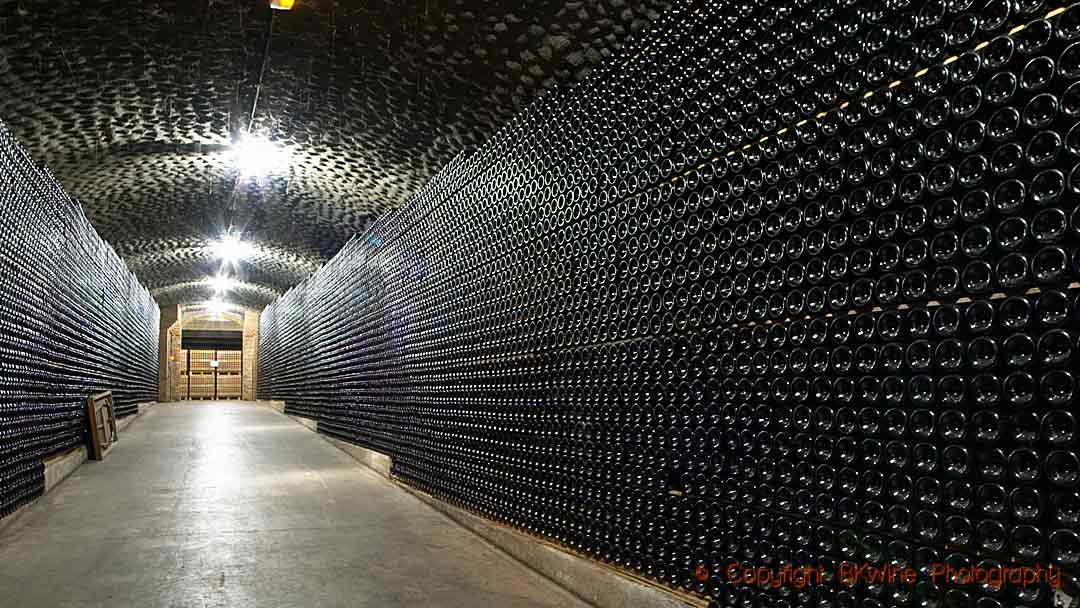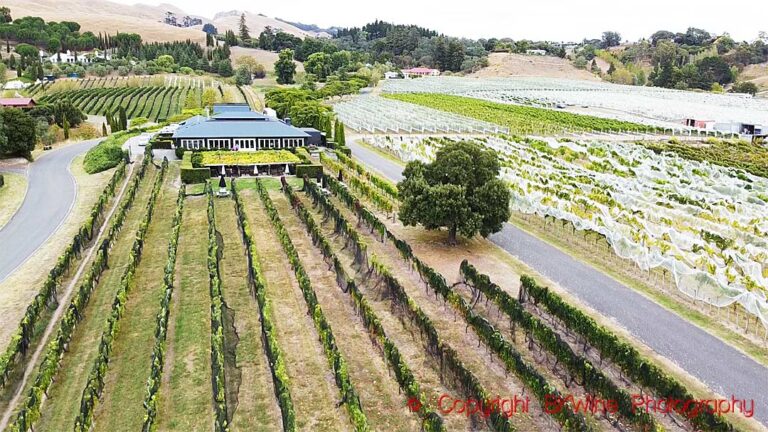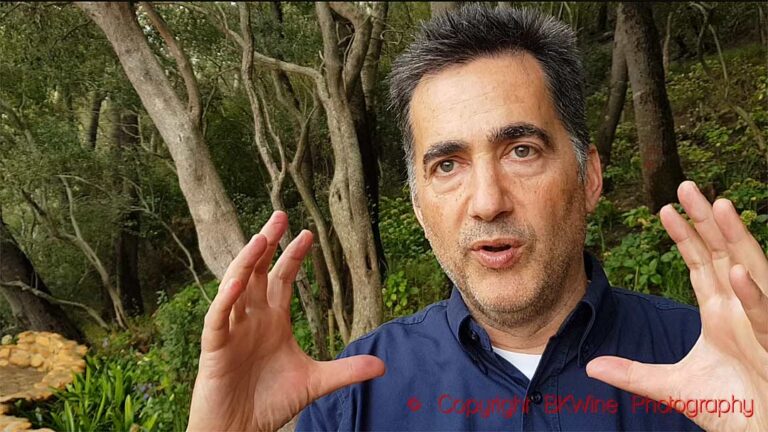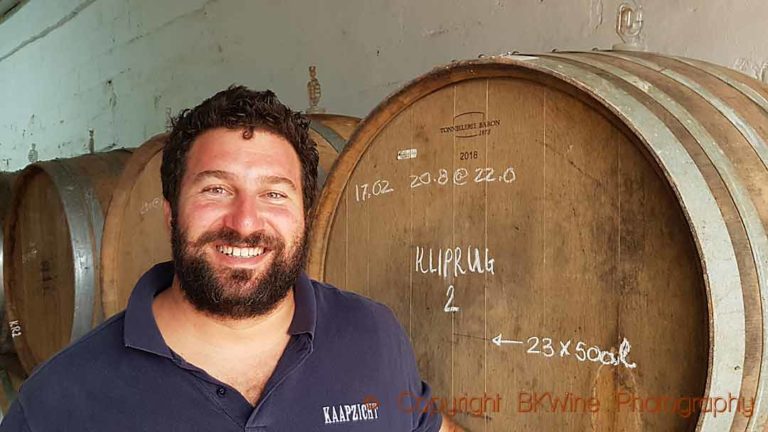New rules promote organic vineyards and long ageing; Eva Plazas At Cava Vilarnau explains
Winemaker Eva Plazas Torné has been working for the cava producer Caves Vilarnau since 1996. In other words, she has a solid experience of how to make the best cava. Now she wants consumers to realize that cava is not only the inexpensive bubbly they have come to expect, that cava can holds its own against the world’s top sparkling wines, if well-made. We met Eva Plazas Torné in Sant Sadurni d’Anoia on Zoom to hear more about how the world of cava is reinventing itself. And to illustrate her point we tasted a range of four Vilarnu wines, from entry-level to top-of-the range barrel aged.
Caves Vilarnau is located in Penedès, 40 kilometres from Barcelona. The area around here, between Sant Sadurni d’Anoia and Vilafranca del Penedès, is the heart of Catalonia’s cava production. Cava can actually be made in several regions in Spain but the vast majority, some 95%, is made in Penedès near Barcelona.
A shorter version of this article has been published on Forbes.com.
The big and famous Codorníu and Freixenet, making many millions of bottles, are found here as well as many of the smaller growers. In terms of volume, Vilarnau is somewhere in between. “We make around 1 million bottles, from 120 hectares of vineyards,” says Eva Plazas Torné, Vilarnau’s winemaker.
They own vineyards but to satisfy demand they also buy grapes. “We have long-term contracts with smaller family growers, and we take care of their vineyards throughout the year.”
Vilarnau started its business in 1949 as a small cava producer right in the centre of Sant Sadurni d’Anoia. Eva arrived here in 1996. The winery was tiny at the time. “In the old winery, in the centre of town, we could not do the most important part: the grape entry. We had the vineyards, but the winemaking had to be done in an external winery so we couldn’t control the process 100%.”
Eva points out that there are still many cava producers that buy the base wine and do not do the entire production process themselves.
For Eva and Vilarnau, everything changed when their very own state-of-the-art winery was inaugurated in 2005. It is located on the highest point in the town, 200 meters above sea level, overlooking the surrounding vineyards and the Montserrat Mountains.
Vilarnau is owned by González Byass since 1982.
New cava rules
Consumers often associate cava with a low price. Low price does not necessarily mean poor quality. It can be a pleasant, unpretentious wine. But cava can be so much more than that. And the producers think it’s time to showcase the higher quality cavas. Eva hopes and believes that the production of slightly more expensive cava categories will increase. “We have the quality, especially when we talk about premium cavas (Reserva and Gran Reserva).”
The plan is that the brand-new rules from the Consejo Regulador de Cava will relaunch cava and hopefully change people’s conception of cava. The new rules stress long ageing on the lees for complexity and also puts a particular focus on organic viticulture.
The Cavas de Guarda Superior category will include
- Reserva, which previously required 15 months of ageing on the lees but now will need a minimum of 18 months, and
- Gran Reserva, which will continue to have at least 30 months ageing.
Also, for the Gran Reserva, three significant innovations are introduced:
- the grapes must come from organic vineyards,
- the vineyards must be at least ten years old, and
- the maximum yield is 10,000 kg/ha.
The entry-level cava is now called Cava de Guarda and has, as before, at least nine months of ageing before the disgorging and a maximum yield of 12,000 kg/ha.
In 2020, 215 million bottles of cava were produced in Spain. This is a decrease of 13% from the previous year. 190 million of these bottles were cava de guarda, and 25 million were cava de guarda superior.
“I think these new rules will increase the distance between cheap and premium cava,” comments Eva.
How can producers get the message out to customers? “We have to communicate and inform,” says Eva. “An example is a tasting I did in Sweden. Afterwards, they wrote to me and said that thanks to the tasting, they have discovered that there is high-quality cava.”
Paying a bit more to get a better-quality cava is well worth the money.
The environment and climate change
In 2016, Vilarnau obtained its organic certification. Vilarnau is also the first cava house to have a certification called “Wineries for Climate Protection” developed by the Federación Española del Vino. The certification requires the company to work continuously to reduce its carbon footprint. Essential points are energy consumption and water consumption.
The evidence of climate change is there, says Eva. “We harvest earlier now, around two weeks earlier in the last ten years. Normally we have low pH in our wines, but in the last three years, it has been higher. This is a big problem. With a low pH (as there was before), we can manage with lower sulphite levels. Low pH protects the wine, and it can age longer.”
Penedès is a sunny region with 2550 hours of sunshine a year. It is relatively dry, with an average of 550 mm of rain per year. But it varies. It can be 800 mm, and in 2018, which was an extremely dry year, they had only 300 mm. However, irrigation is rare in the region.
“Our local grapes, xarel-lo not least, are very well adapted to a dry climate. We need our local grape varieties; they are best suited to cope with climate change.”
The grape varieties
Vilarnau, like most cava producers, mainly uses the three traditional cava grapes: macabeo, xarel-lo and parellada. Each grape contributes different things to the blend.
“We often use 50% of macabeo (called viura in Rioja)”, says Eva. “For us, it is the backbone of a cava. It has compact bunches, nice aromas, good acidity and balance. It gives a full-bodied wine and a good level of alcohol. Xarel-lo gives high acidity, a strong body and structure and a lot of fruit. Parellada has floral aromas and gives a balanced, elegant wine with good acidity and slightly lower alcohol.”
The wines
Vilarnau Cava Brut Nature (~10 euro) is a blend of these three grapes, 50% macabeo, 35% parellada and 15% xarel-lo. Before we dive in and taste the cava, we taste the “base wine” with the same blend together with Eva. The base wine is the still wine that has not yet undergone the second fermentation. The alcohol content is 10%, and the acidity is 6 grams per litre. It is pleasant and fruity with aromas of apples and pears. Sugar and yeast will be added later to the base wine for the second fermentation in bottle. This will create the bubbles and it will raise the alcohol level a little. The so-called traditional method.
We recognize these aromas when we then try the bubbly equivalent. The alcohol content has been raised by just over one per cent, thanks to the second fermentation, which also brings additional aromas. And, of course, the bubbles add an intense sensation of freshness in the mouth. The residual sugar content is less than 3 grams per litre, and as this is a brut nature, no sugar has been added after the disgorging. The wine has been on its lees for nine months. It is light and bright in colour and style, with citrus aromas, pears and green apples, and with an appetizing acidity in the finish.
Harvest and blending
The harvest usually begins in mid-August with macabeu. Eva looks at the pH and the balance in the grapes to decide the right moment to harvest. The grapes are destemmed and cooled down to 10 degrees C to preserve the aromas and prevent oxidation.
“Then we press the grapes,” says Eva,” and depending on the grape variety and the ripeness, I may make some skin contact, mainly on chardonnay and xarel-lo because their skins have intense aromas. We then ferment the grapes separately at 14–16 degrees C. The fermentation lasts 20 days to a month.”
She makes the first blend in December and then a fining and a cool stabilization. In 2016, Eva switched from animal protein to vegetable for the fining. She now uses pea or potato protein, which makes their cava vegan-friendly. Just like in other parts of the world, vegan wine has become fashionable in Spain.
She bottles in February. Now it’s time for the second fermentation. “We add yeast and concentrated grape must to the wine. We have our own yeast for the second fermentation that we selected a long time ago in our vineyard.” The wine will now spend several months or years in the cellar, depending on the type of cava.
Vilarnau Cava Brut Nature Reserva 2018 has 24 months of ageing on the lees, and you notice immediately that the longer ageing gives more intense aromas. It is toasty but also floral. The acidity is fresh, and the wine gives a crisp feeling but with a nice smoothness in the aftertaste. The wine has the same grapes as brut nature except that xarel-lo is replaced with chardonnay, so 50% macabeo, 35% parellada and 15% chardonnay. (~12 euro)
Vilarnau Cava Brut Nature Grand Reserva 2016 is the house’s first organic Gran Reserva. It has been aged on the lees for 36 months, so a few months more than required by the law. The grapes are 35% macabeo, 35% parellada, 25% chardonnay and 5% pinot noir. The colour is golden, the aromas strong and complex; it’s toasty with honey, almonds and a little caramel, and also ripe fruit and dried apricots. (~20 euro)
Vilarnau Cava Albert de Vilarnau Fermentado en Castaño Gran Reserva is the prestige cuvée made from 100% xarel-lo. Xarel-lo is a local grape that is only grown here in Catalonia. You can also make excellent still wines from xarel-lo.
The grape is not the only thing that makes this cava unusual. 55% of the base wine has been fermented and aged in 250-litre chestnut barrels (castaño). “I like this combination, xarel-lo and chestnut,” says Eva. “The chestnut barrels have been made by a local cooper from trees here in the area.
The base wine is left in the chestnut barrels for six months until February when it is blended with the rest of the wine that has spent the time in stainless steel tanks. The oxidation from the barrel ageing shows in the golden colour of the wine. The aromas are different from Vilarnau’s other cavas. It is full-bodied with a long and smooth taste of apricot jam, nuts, cinnamon and honey, a delicious and exciting wine. Eva suggests that we drink it with flavourful food. (~30 euro)
Vilarnau exports 70% of its production. Northern Europe is an important market – Scandinavia, Great Britain, Russia, Holland and Belgium – and also Israel, USA, South America and Asia.

















